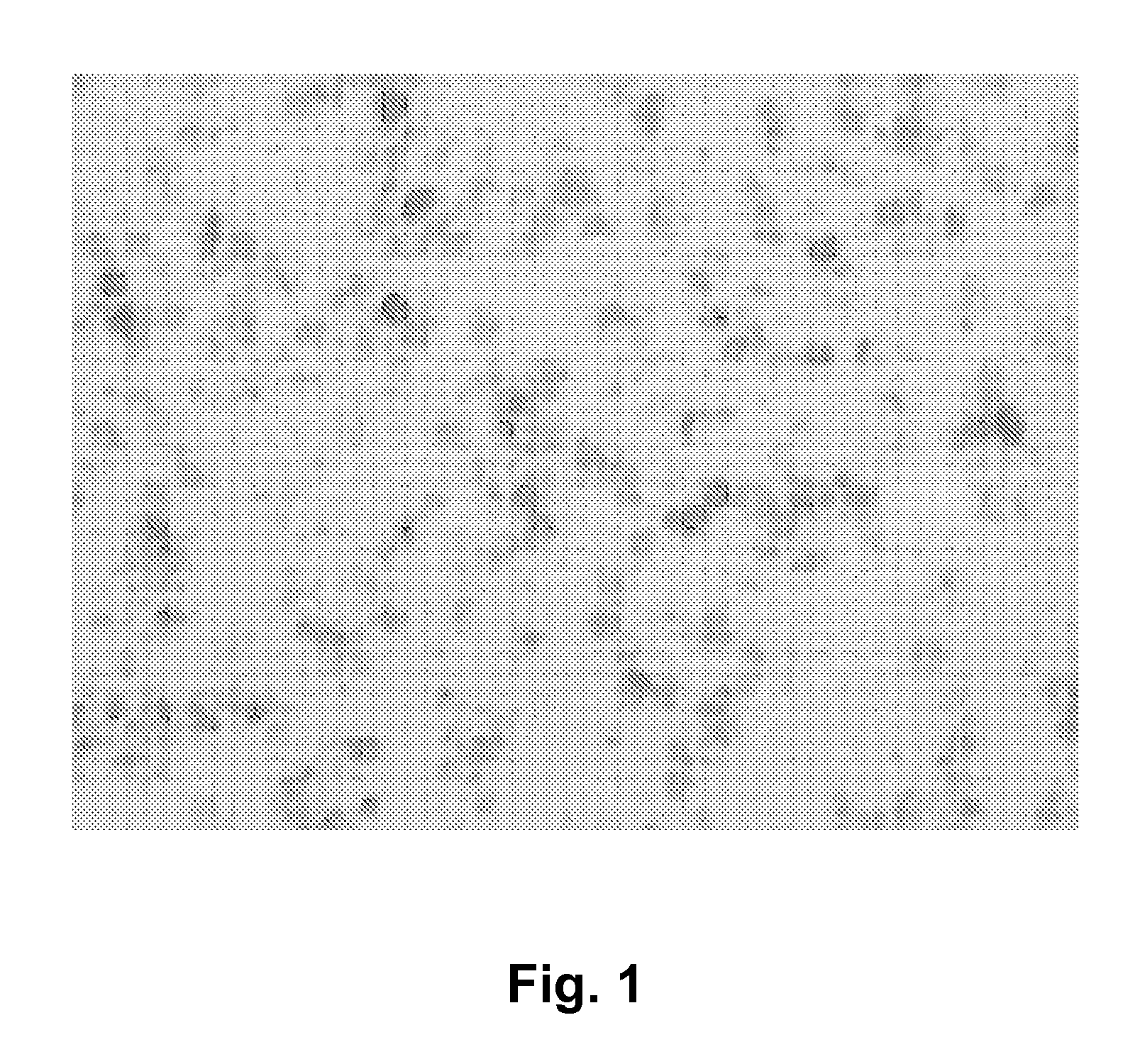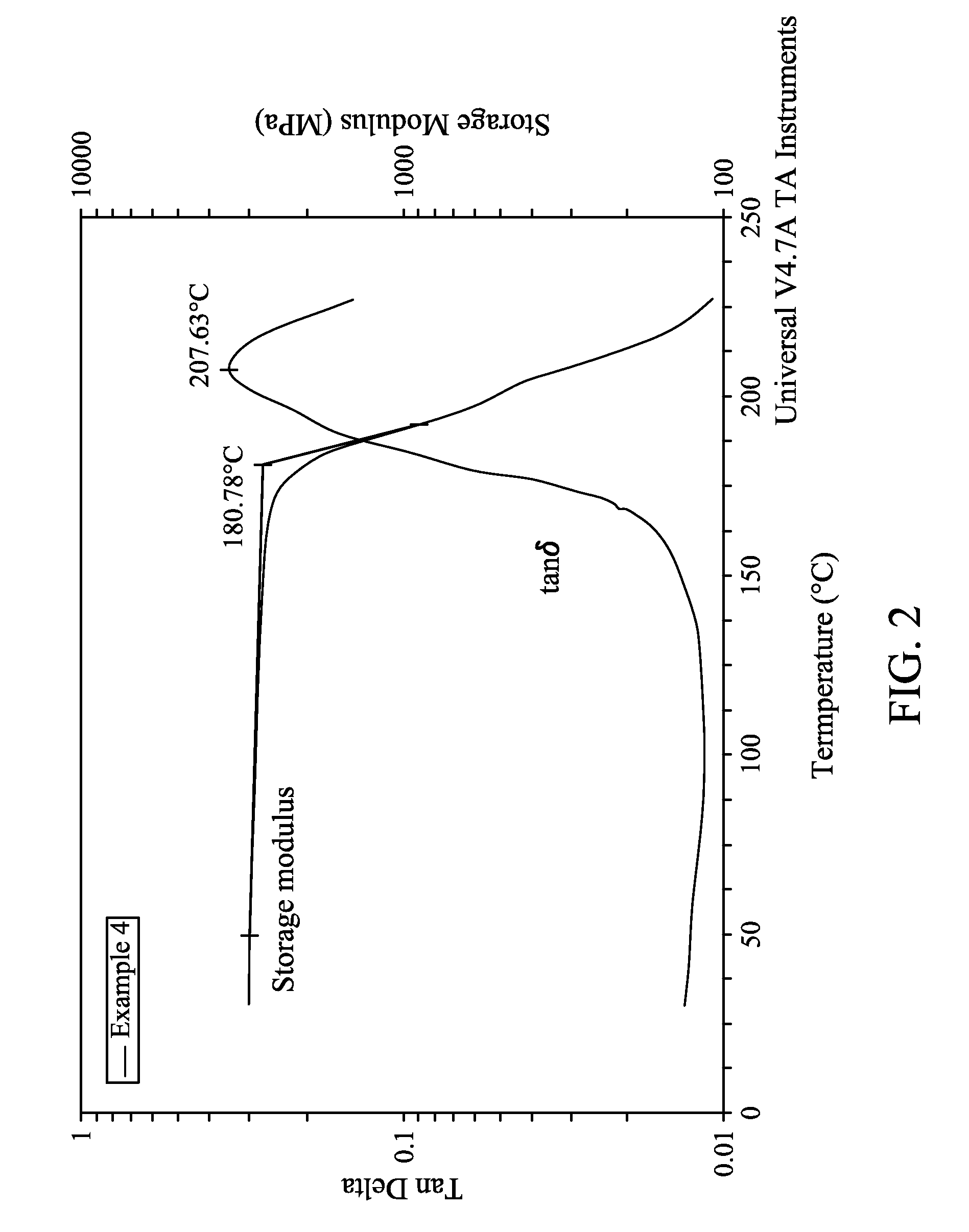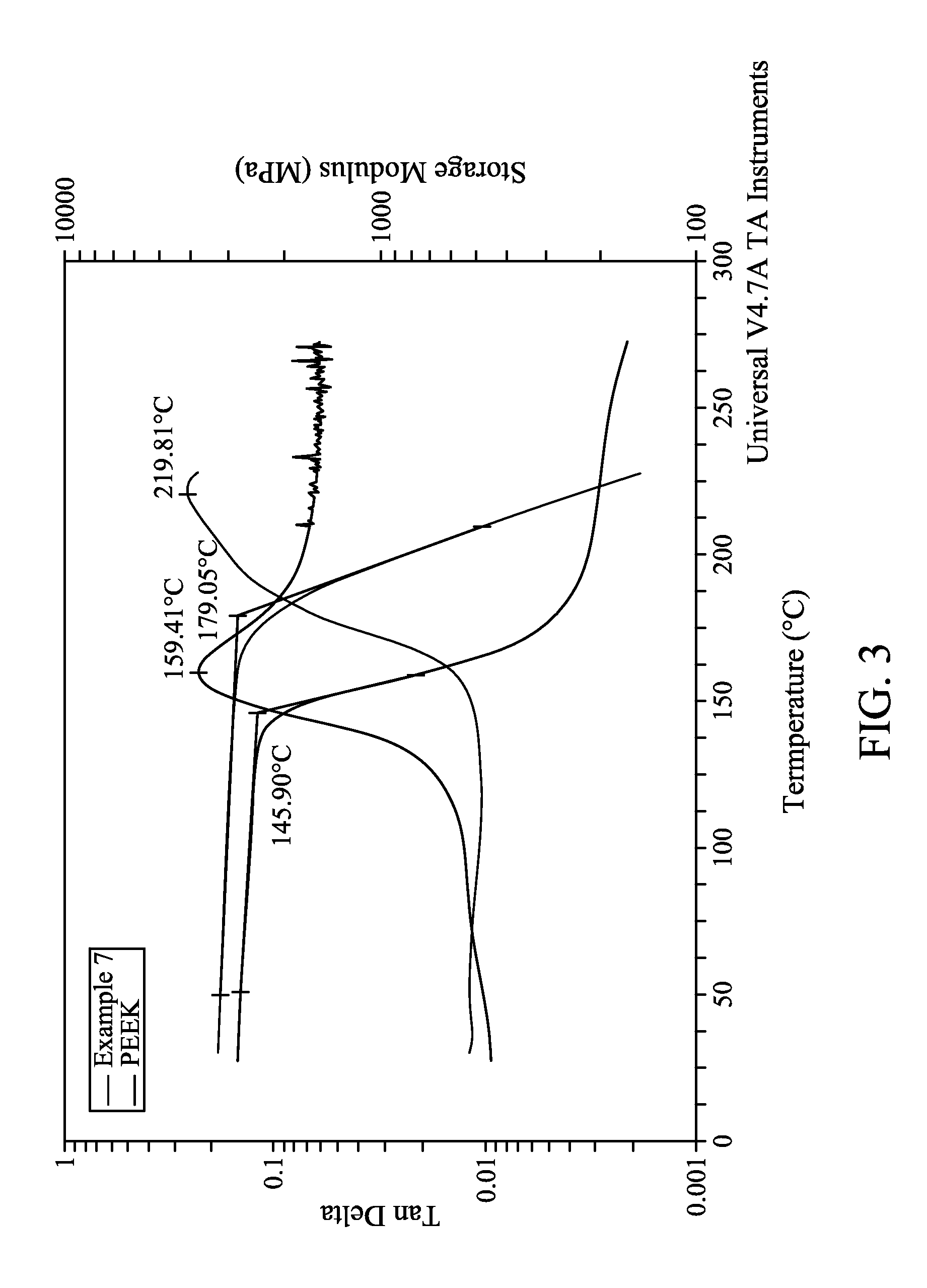High temperature polymer blends of poly(aryl ether ketone phthalazinone)
a technology of polyether ketone and high temperature composition, which is applied in the field of high temperature composition, can solve the problems of compound still showing similar long-term load performance, compound limiting use at high temperature under load, and increasing weight of reinforcing fibers
- Summary
- Abstract
- Description
- Claims
- Application Information
AI Technical Summary
Benefits of technology
Problems solved by technology
Method used
Image
Examples
##p examples
PAEKP Examples
[0066]The PAEKP materials utilized in the blended polymers of the present teachings are either amorphous polymers or semicrystalline polymers. The semicrystalline PAEKP polymers are themselves novel. The incorporation of 4,4′-biphenol as a comonomer unit into poly(aryl ether ketone phthalazinone) containing a phthalazinone monomer, as described, unexpectedly results in a melt processable semicrystalline polymer with a Tg>180° C. that is not soluble in organic solvents such as chloroform. Even with the incorporation of 4,4′-biphenol as low as 30 mol %, the resulting poly(aryl ether ketone phthalazinone) is still semicrystalline with a Tg of 230° C., a melt temperature of 316° C., and a melting endotherm of 5.0 J / g. Given the relatively small amount of the 4,4′-biphenol comonomer incorporated, such a result is entirely unexpected. Advantageously, this polymer is not soluble in chloroform, and compression molded film has good resistance to organic solvents.
[0067]Semicryst...
example 3
Semicrystalline Copolymer with Molar Ratio of 4,4′-Biphenol and Phthalazinone B / P=60 / 40
[0103]A copolymer with a 60 / 40 molar ratio of 4,4′-biphenol and phthalazinone monomer was prepared according to the procedure described in Example 1. The resulting polymer has an inherent viscosity (IV) of about 0.79 dL / g, a glass transition temperature of about 204° C., melting temperature of about 357° C. and a melting endotherm of about 16.0 J / g. The polymer is insoluble in chloroform, dimethylformamide (DMF) and N-cyclohexylpyrrolidinone (CHP).
example 4
Semicrystalline Copolymer with Molar Ratio of 4,4′-Biphenol and Phthalazinone B / P=65 / 35
[0104]A copolymer with a 65 / 35 molar ratio of 4,4′-biphenol and phthalazinone monomer was prepared according to the procedure described in Example 1. The resulting polymer has an inherent viscosity (IV) of about 1.48 dL / g, a glass transition temperature of about 205° C., a melting temperature of about 347° C. and a melting endotherm of about 14.0 J / g. The polymer is insoluble in chloroform, dimethylformamide (DMF) and N-cyclohexylpyrrolidinone (CHP).
PUM
| Property | Measurement | Unit |
|---|---|---|
| Tm | aaaaa | aaaaa |
| Tg | aaaaa | aaaaa |
| Tm | aaaaa | aaaaa |
Abstract
Description
Claims
Application Information
 Login to View More
Login to View More - R&D
- Intellectual Property
- Life Sciences
- Materials
- Tech Scout
- Unparalleled Data Quality
- Higher Quality Content
- 60% Fewer Hallucinations
Browse by: Latest US Patents, China's latest patents, Technical Efficacy Thesaurus, Application Domain, Technology Topic, Popular Technical Reports.
© 2025 PatSnap. All rights reserved.Legal|Privacy policy|Modern Slavery Act Transparency Statement|Sitemap|About US| Contact US: help@patsnap.com



